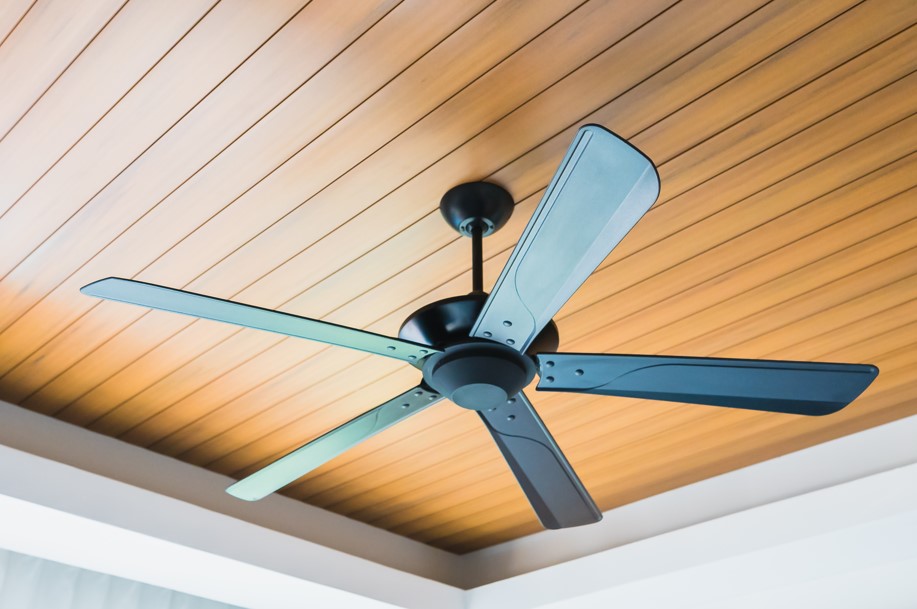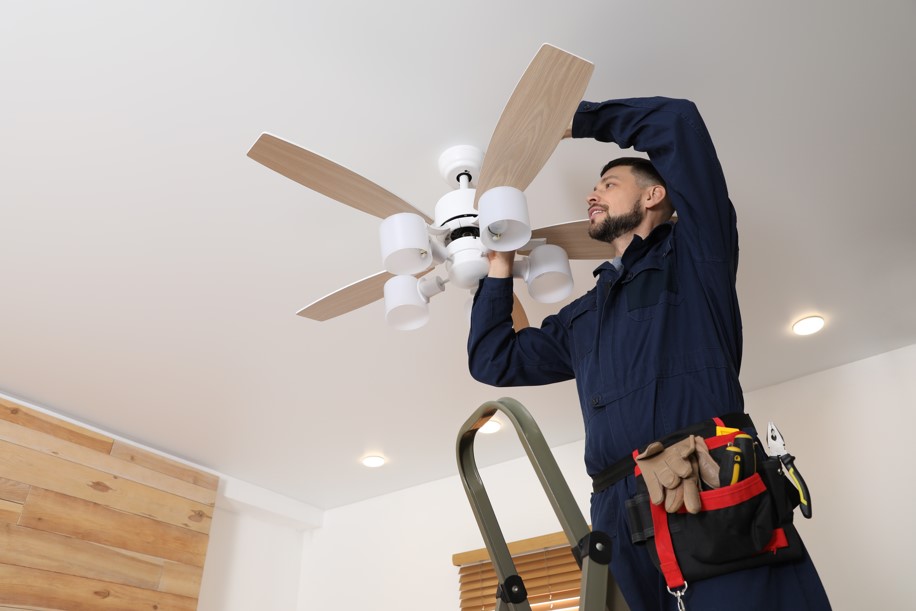How Ceiling Fans Work

Everybody knows how a simple fan ceiling works, or at least is familiar with the basic concept behind their principle of operation. A fan rotates, setting the air in motion, which produces a cooling effect.
Ceiling fans are popular not only for how effective they are in bringing relief to those living in areas where long summer months would otherwise be quite unbearable but also for how they decorate and add to many spaces.
And even though you might be aware of how ceiling fans work, knowing how they are built and how to choose one for your own space might be useful in the future. So, if you have a couple of spare minutes, we invite you to read through this article and find out everything you maybe didn’t know about ceiling fans!
Ceiling Fan Components
Before we dive deeper into how exactly a ceiling fan works, it might be helpful to learn about all the different components that most ceiling fans are made of. This knowledge will prove to be useful during an installation process or when you’ll need to perform some repairs.
For the sake of keeping this educational yet easy to understand, we will talk about the main and most crucial ceiling fan parts. If you wish to access a more technical rundown of how a ceiling fan is built, many producers offer those included with their products or on their websites.
The list of fan components includes:
- an electric motor;
- mounting bracket;
- canopy;
- blades (usually made of plastic or iron);
- rotor;
- light fixture;
- rod hanger pipe.
The components are fairly easy to put together, as the most challenging part of the installation process is to hook up the appliance to the electric wires in the ceiling. You can perform such installations yourself, especially if you have a lot of experience, but if that’s not exactly the case, it’s always better to ask for a professional’s help than to risk getting injured and causing damage to the fan.

How Ceiling Fans Work – The Principle
Now we’ve got that out of the way, it’s high time we talk about how do ceiling fans work? This process might be slightly different from what you might expect. What we mean by that is the fact that ceiling fans don’t actually lower the room’s temperature but rather affect how we experience it. So if you think a ceiling fan fulfils the exact same function as an AC unit, that is not the case.
How does a ceiling fan work? There are a few key processes that allow us to experience the effects of a fan working, and these would be airflow, evaporative cooling, and destratification.
Airflow is the most logical and easiest process to understand since we can immediately feel it when entering a space with a ceiling fan on. Just like we’ve mentioned before, by rotating, a fan’s blades put the air in motion, causing it to move through space. The air that sits near the ground is sucked in higher by the fan and then gets pushed down again, creating constant airflow that offers us a delicate breeze.
What comes after that is evaporative cooling, a key component to why we experience relief when the fan is running. This process relies on the fact that humans sweat. When air hits our skin, it allows the moisture that sits on it to evaporate, leaving us feeling comfortably cool. It’s the same thing that happens to us when we’re outside, and it’s winding.
Last but not least is the destratification. It’s when different layers of air mix with each other, lowering the overall temperature. Normally, warmer air rises to the top, while cooler air stays near the ground. It’s a natural occurrence that happens in most places we frequent.
Thanks to the constant airflow caused by the fan’s operation, those two layers of air are mixing, which balances the temperature of the room.
How To Choose a Ceiling Fan
The most important question – how to choose a fan that will meet your expectations? The factors you want to pay attention to are the blade size, motor, the speed at which blades are able to rotate, and the construction of a fan.
The number of blades doesn’t really matter, as what creates the desired effect is their size and the speed at which they move. So if you’re looking for a fan for your spacious living room, you should invest in a larger model that will be able to work effectively in such space. In the same way, smaller fans will make a lot of sense in your bedroom or a kid’s room.
Not without significance is also the ceiling fan direction. In summer, you want your fan to rotate counterclockwise in order to create a downdraft, forcing cold air to flow down. In winter, it’s better to utilize a clockwise rotation which allows warm air to be evenly distributed throughout the space. Most ceiling fans are designed to rotate in the counterclockwise direction, but it’s crucial to check that information before you purchase one.
That being said, larger fans that can operate with significant speed will use more electricity, which is something to keep in mind while shopping. Those fans will also be more expensive, as their construction will be more durable and their motor more efficient.
A quality ceiling fan can cost even $300 and more, but you can also find great models in the lower price range.
In Conclusion
Investing in a ceiling fan can significantly improve the comfort of your life during the summer months. Fan’s principle of operation is pretty simple, but that’s the beauty of this appliance. It effectively allows you to cool down during heat waves and at night when the heat can be especially unpleasant.
Of course, it will not replace an HVAC in your home, but it can help it run more efficiently. If you’re looking for a team of AC technicians who will help you install and repair a cooling system in your home, contact us. We’re ready to assist you anytime!
